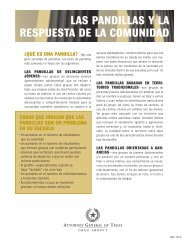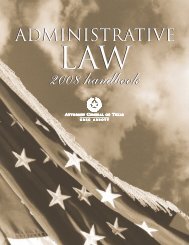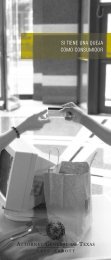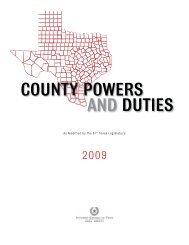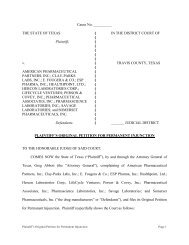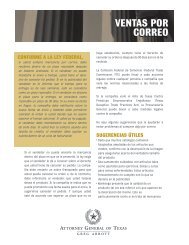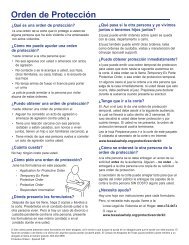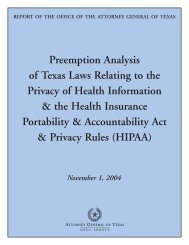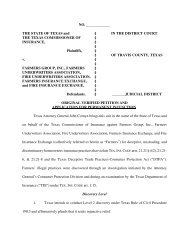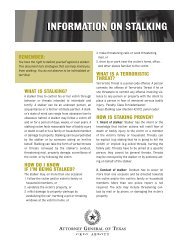Nuisance Abatement Manual - 2005 - Texas Attorney General
Nuisance Abatement Manual - 2005 - Texas Attorney General
Nuisance Abatement Manual - 2005 - Texas Attorney General
You also want an ePaper? Increase the reach of your titles
YUMPU automatically turns print PDFs into web optimized ePapers that Google loves.
INTRODUCTION<br />
Chapter 125 of the <strong>Texas</strong> Civil Practice & Remedies Code and Section 101.70 of the <strong>Texas</strong><br />
Alcoholic Beverage Code are considered the “<strong>Texas</strong> <strong>Nuisance</strong> <strong>Abatement</strong> Statutes.” These statutes<br />
permit law enforcement agencies to close any piece of property involved in illegal activities, including<br />
violations of the <strong>Texas</strong> Penal Code, the <strong>Texas</strong> Alcoholic Beverage Code and the <strong>Texas</strong> Controlled<br />
Substances Act.<br />
The Office of the <strong>Attorney</strong> <strong>General</strong> (OAG) helps <strong>Texas</strong> municipalities, local prosecutors and<br />
law enforcement agencies (including police departments, sheriff’s offices, task forces and the <strong>Texas</strong><br />
Alcoholic Beverage Commission) in targeting, processing and filing suit against property owners who<br />
allow public and common nuisances to exist on their property. The purpose of a nuisance abatement<br />
lawsuit is not to show or prove that the property owner is guilty of illegal acts, but rather to prove<br />
that the property owner allowed the illegal activity to occur on the property and failed to make reasonable<br />
attempts to stop it.<br />
Many police departments have become skilled at this procedure and have great success on<br />
their own. When local law enforcement lacks the resources or experience in such cases, the OAG will<br />
send staff when requested to any area of the state to provide technical assistance in initiating the nuisance<br />
abatement process. Evidence will be compiled and sent to the OAG for review. Arrest reports,<br />
calls for police service and search warrants contained in local departmental records, as well as police<br />
officers’ and residents’ affidavits, are all used in this process. When the OAG determines that sufficient<br />
evidence exists, a lawsuit will be filed on behalf of the State. The OAG will provide legal representation<br />
for the duration of the lawsuit.<br />
<strong>Nuisance</strong> <strong>Abatement</strong> <strong>Manual</strong><br />
<strong>2005</strong> Fourteenth Edition<br />
1<br />
Office of the <strong>Attorney</strong> <strong>General</strong><br />
Criminal Law Enforcement Division



